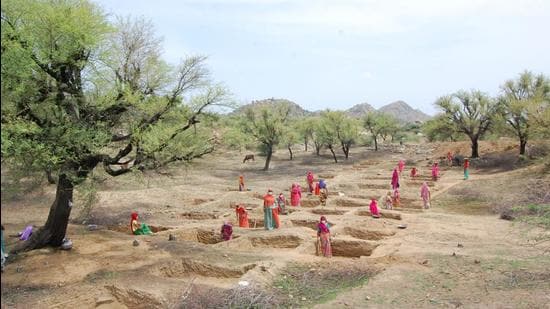
On 24th March 2023, the Union Ministry of Rural Development notified a hike in wage rates under the rural job guarantee programme for the Financial Year 2023-24. The hike, applicable from 1st April 2023, ranges from Rs. 7 to Rs. 26, or between two per cent to ten per cent for different states. Rajasthan registered the highest percentage increase in wages up from Rs. 231 in 2022-23 to Rs. 255 per day for the upcoming year. Chhattisgarh and Madhya Pradesh, with the lowest current daily wages at Rs. 221, recorded a 17 per cent increase from last year when the daily wage was Rs. 204. Karnataka, Goa, Meghalaya, and Manipur are among the states that registered the lowest percentage increase. The wage rate hike for the 2023-24 financial year leaves Haryana with the highest daily wage at Rs. 357 per day with Madhya Pradesh and Chhattisgarh having the lowest at Rs. 221. Last year, 21 out of 34 states and Union Territories got less than a five per cent increase and ten states got a more than five per cent hike in daily wage rates. Three states – Manipur, Mizoram and Tripura – recorded no increase in wage rates during the previous financial year.
At a time when demand is at an all-time low and the after-effects of COVID-19-induced lockdown are still evident in the informal sector, experts have called out the measly hike in MGNREGS wages. According to analysts, MGNREGS wage rates in 17 states are below the corresponding state minimum wages. In spite of various judgements stating that the MGNREGS wage rate cannot be less than the minimum agricultural wage rate of the states, there has been little effort to increase the per day remuneration for unskilled work under the employment guarantee programme.
Low wages in MGNREGS coupled with attraction of employment opportunities in urban areas, although mostly in the informal sector, have resulted in declining interest among workers in working for MGNREGS schemes. This will not only impact the asset creation for rural areas but is also opening doors for contractors and middlemen to take control locally furthering the decline in guaranteed rural employment.